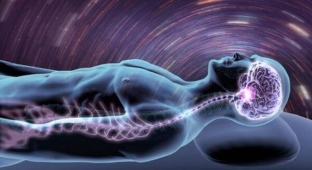Sometimes when we put our body into the arms of sleep, an unknown force causes our limbs (especially our legs) to twitch. As a result, we wake up from a strong start, trying to understand what happened, and, after grumbling a little, we fall asleep. The reasons for twitching in a dream are of interest, perhaps, to every person who has woken up from them at least once. Estet-portal.com decided to talk about the main theories that experts are trying to explain why we twitch when we fall asleep, and how this is related to dreams about falling.
What makes us twitch in our sleep – not exactly known
Since scientists became interested in the causes of startle in sleep, they came up with a scientific term for this phenomenon – hypnagogic twitching. What makes us twitch in our sleep is not exactly known, but there is a theory: twitching in sleep – it's a side effect of the invisible fight for control in the brain that happens every night between wakefulness and sleep.
As a rule, during deep sleep, our body remains motionless. Even while watching the most vivid dreams, our muscles remain relaxed and immobilized, not reacting to what is happening in the head. During this time, events occurring in the environment are ignored. However, the door between the world of dreams and real events does not close completely. The sleeping brain allows the body to perform two types of movements.
Twitching in a dream causes a struggle between brain systems?
The characteristic movement that occurs during sleep is rapid eye movement. When we dream, our eyes move according to the imaginary picture. For example, if you are watching a ball in a dream, your eyes move in the direction of the object of observation. Such movements seem to pass from the dream world into reality. Therefore, if a sleeping person's eyes move, be sure – he dreams.
When we twitch in our sleep, something else happens. Perhaps the hypnagogic twitch is evidence that the motor system is still able to control the body during the onset of sleep paralysis. There is no switch in the brain that puts it into sleep mode at night and wakeful mode – afternoon. There is a balance of systems that control our activities in turn.
Deep under the cerebral cortex (the most developed area of the human brain) is one of the above systems – reticular activating system. It is located among the areas of the brain that control basic physiological processes such as breathing. When the reticular activating system is in full force, we are in a state of excitement and ready for action, that is, we are awake.
The ventrolateral preoptic nucleus (VLPN), located just anterior to the optic nerve intersection, causes drowsiness. The location of the VLPN near the optic nerve supposedly allows us to collect information about the beginning and end of daylight hours and influence our sleep cycles.
When the mind shifts to interpreting the outside world and starts generating its own "entertainments" (dreams), a struggle begins between the reticular activating system and VLPJ, in which VLPJ wins. However, before finally giving up, the reticular activating system strikes – the energy of daytime wakefulness splashes out in the form of random movements.

Why, when a person twitches in a dream, does he dream of a fall?
Many people claim to twitch in their sleep when they dream of falling. Others flinch as they dream they stumble. Why is this happening?
This is an example of a rather rare phenomenon called incorporation of a dream, when some environmental factor is "built in"; into your dream. At the same time, our mind masterfully composes quite plausible stories. The fact is that during sleep, the parts of the brain responsible for planning and forecasting are suppressed. This allows the mind to respond creatively to any stimulus and improvise in the creation of dreams.
Why does this happen when we twitch in our sleep? In the waking world, we try to see the meaning in the phenomena, processes and events taking place around us. During sleep, the brain tries to make sense of its activities, which leads to the appearance of dreams. Much of the outside world is shrouded in a veil during sleep, but shuddering in sleep – this is "native" the movement of our body that attracts the attention of the sleeping consciousness. Therefore, the explanation of such behavior is presented to us by the brain in the part of the dream.
There is another theory about the causes of jerks in sleep: the hypothalamus, receiving information about a decrease in heart rate and slow breathing, sends impulses for muscle contraction. So he checks whether our body is viable. Some believe that nervous tension, stress, lack of magnesium, and even the touch of the devil causes twitching during sleep. Be that as it may, there is no exact answer yet.






Add a comment